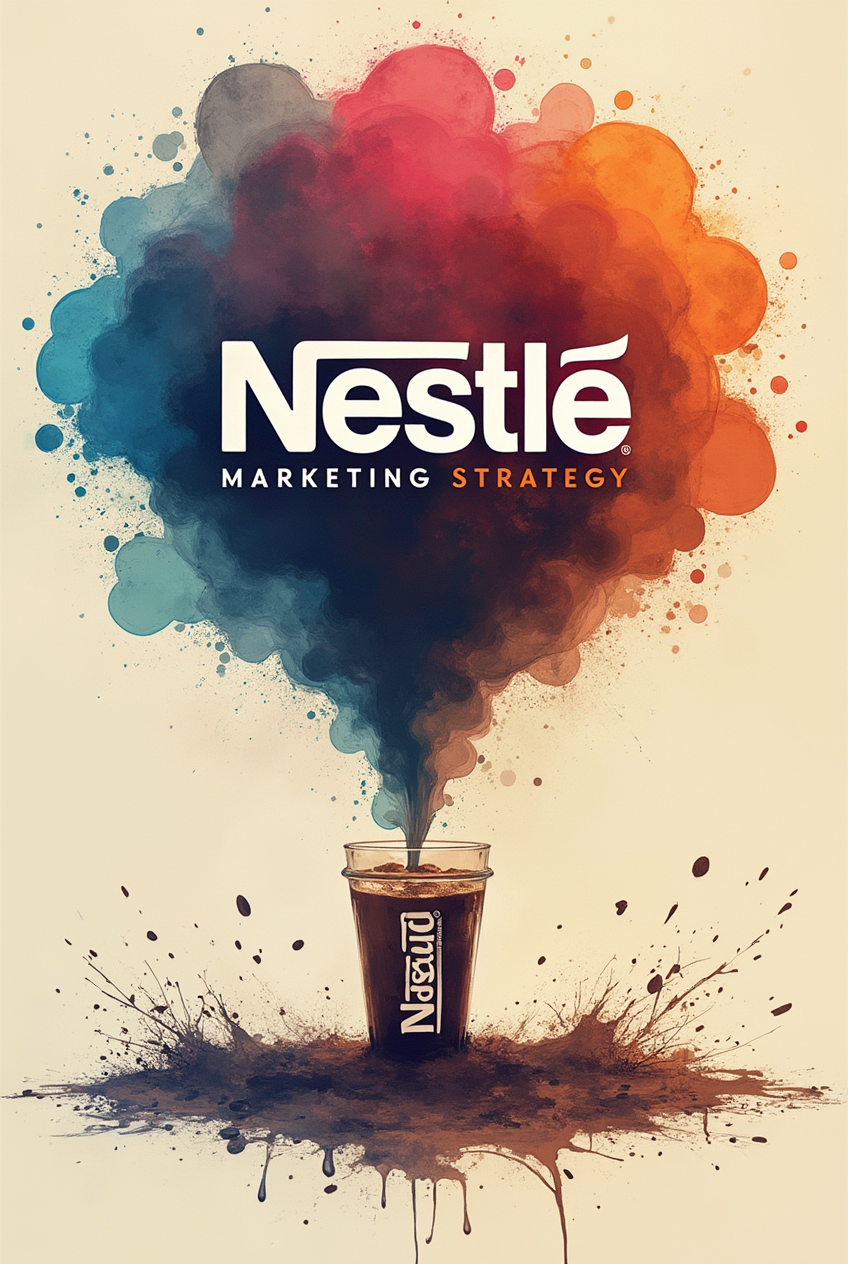In today’s digital world, real-time communication has become crucial for businesses to maintain customer engagement, ensure seamless support, and foster user interaction. Sendbird, a leading in-app messaging platform, has positioned itself as a top player in the communication API industry. The Sendbird marketing strategy involves providing comprehensive solutions for integrating chat, voice, and video into apps and websites, allowing businesses to enhance customer communication.
Table of Contents
In this article, we break down the Sendbird marketing strategy, focusing on the key approaches and tactics that the company employs to stay ahead of the competition, drive customer acquisition, and maintain strong relationships with its clients.
1. Product-Led Growth (PLG) at the Core of Sendbird Marketing Strategy

A cornerstone of the Sendbird marketing strategy is its Product-Led Growth (PLG) approach. This strategy relies on the product itself to drive user acquisition, expansion, and retention. It allows businesses to experience the product’s value before committing to a paid subscription, reducing the dependency on traditional sales and marketing methods.
Key elements of this Sendbird marketing strategy include:
- Freemium Model: Sendbird offers a free tier with basic features, encouraging potential customers to test its functionality. This approach allows businesses to grow with the platform as their needs evolve, eventually upgrading to paid plans.
- Developer Focus: The Sendbird marketing strategy centers on providing developers with comprehensive documentation, APIs, and SDKs, making it easy for them to implement the platform’s features into their applications. This developer-centric approach empowers businesses to quickly add messaging and real-time communication features, making the adoption of paid plans seamless.
By adopting this PLG model, the Sendbird marketing strategy ensures that users experience the platform’s value first-hand, driving expansion through satisfied customers.
2. Content Marketing and SEO: Fueling Sendbird’s Digital Presence
A key component of the Sendbird marketing strategy is content marketing, which plays an instrumental role in attracting and educating its target audience. This approach is designed to build trust with developers, product managers, and business decision-makers by delivering valuable content at every stage of the customer journey.
a. Developer-Centric Content
The Sendbird marketing strategy focuses heavily on creating content that appeals to developers by providing in-depth technical blogs, tutorials, and case studies. These resources demonstrate how Sendbird’s APIs can solve specific challenges, such as:
- Implementing in-app messaging for customer support
- Adding chat functionality to gaming or social platforms
- Enabling voice and video communication for telehealth applications
By addressing developers’ specific pain points, the Sendbird marketing strategy ensures that content is highly relevant and valuable, driving qualified traffic to its website.
b. Thought Leadership
Another important aspect of the Sendbird marketing strategy is thought leadership. Sendbird publishes whitepapers, industry reports, and hosts webinars that discuss emerging trends in real-time communication. These pieces not only establish Sendbird as an authority in the communication API industry but also provide a steady stream of leads through gated content that requires users to submit contact information before accessing premium resources.
c. SEO and Organic Traffic
To boost organic traffic, the Sendbird marketing strategy focuses on optimizing content for high-intent keywords such as “communication APIs,” “in-app messaging,” and “real-time chat solutions.” By applying SEO best practices like backlink building, internal linking, and strategic use of keywords, Sendbird maximizes its visibility in search engine results. This ensures that potential customers find the brand when searching for solutions related to real-time communication.
3. Partnerships and Integrations: Expanding Sendbird’s Ecosystem
Strategic partnerships are an essential part of the Sendbird marketing strategy. By collaborating with other software providers, Sendbird expands its platform’s capabilities and reaches new audiences. These partnerships position Sendbird as a critical component in various industries, from e-commerce to healthcare.
a. SaaS Integrations
The Sendbird marketing strategy includes partnerships with major SaaS providers like Salesforce, Zendesk, and Shopify. By integrating Sendbird’s communication APIs with these platforms, businesses can effortlessly incorporate chat, voice, and video features into their existing systems. This seamless integration makes Sendbird a preferred solution for enterprises looking to streamline customer communication processes.
b. Co-Marketing Initiatives
Another component of the Sendbird marketing strategy is co-marketing efforts with its partners. These initiatives include joint case studies, webinars, and whitepapers that highlight the benefits of using Sendbird alongside other software solutions. Such collaborations not only increase Sendbird’s visibility but also demonstrate how the platform can provide value across different industries.
4. Vertical-Specific Marketing: Customizing the Message
The Sendbird marketing strategy also involves tailoring its marketing efforts to specific verticals. This allows the company to address the unique needs of different industries, ensuring that marketing messages resonate with the right audiences.
Key verticals targeted by the Sendbird marketing strategy include:
- Healthcare: Telehealth platforms use Sendbird’s APIs to enable secure, real-time communication between patients and healthcare providers.
- E-commerce: Sendbird empowers retailers to enhance customer support through live chat and messaging features, providing a seamless user experience.
- Gaming: Multiplayer games can benefit from Sendbird’s real-time chat solutions, enabling in-game communication and social interaction between players.
By developing use-case-specific content and marketing materials, the Sendbird marketing strategy effectively reaches decision-makers in these industries, demonstrating how the platform can address their unique challenges.
5. Customer Success and Support: Enhancing the Sendbird Marketing Strategy
Customer success plays a critical role in the Sendbird marketing strategy. By ensuring that customers are able to fully utilize the platform’s features and derive maximum value, Sendbird builds long-term relationships and reduces churn.
a. Case Studies and Testimonials
As part of the Sendbird marketing strategy, the company highlights successful implementations through case studies and testimonials from satisfied customers. These stories serve as powerful social proof, showcasing how Sendbird has helped businesses across different industries improve their communication capabilities.
b. Customer-Centric Support
Sendbird’s customer success team works closely with clients to provide personalized onboarding, training, and ongoing technical support. This proactive approach not only strengthens customer loyalty but also generates positive word-of-mouth marketing, further amplifying the Sendbird marketing strategy.
6. Data-Driven Marketing and Analytics: Optimizing Sendbird’s Campaigns
The Sendbird marketing strategy is heavily data-driven, allowing the company to continuously optimize its marketing efforts based on real-time analytics. By tracking customer behavior and campaign performance, Sendbird ensures that its marketing initiatives are both effective and efficient.
a. A/B Testing for Campaign Optimization
The Sendbird marketing strategy includes regular A/B testing of email campaigns, landing pages, and advertising creatives. This allows the company to identify which tactics deliver the best results and continuously refine its approach to improve conversion rates.
b. Personalization Through Data
Sendbird also leverages data to tailor its marketing messages to specific customer segments. By analyzing which features are most popular among different user groups, the company can create personalized upsell campaigns that target customers with relevant offers, encouraging them to upgrade to higher-tier plans.
Conclusion
The Sendbird marketing strategy is a multifaceted approach that combines Product-Led Growth, content marketing, partnerships, vertical-specific targeting, customer success, and data-driven optimization. Through these strategies, Sendbird has built a powerful marketing engine that not only drives customer acquisition but also fosters long-term loyalty.
By focusing on delivering a superior product experience and leveraging thought leadership, Sendbird continues to stand out in the competitive communication API space. The company’s ability to adapt its marketing strategy to meet the needs of diverse industries ensures that it remains a top choice for businesses seeking to integrate real-time communication into their platforms.










